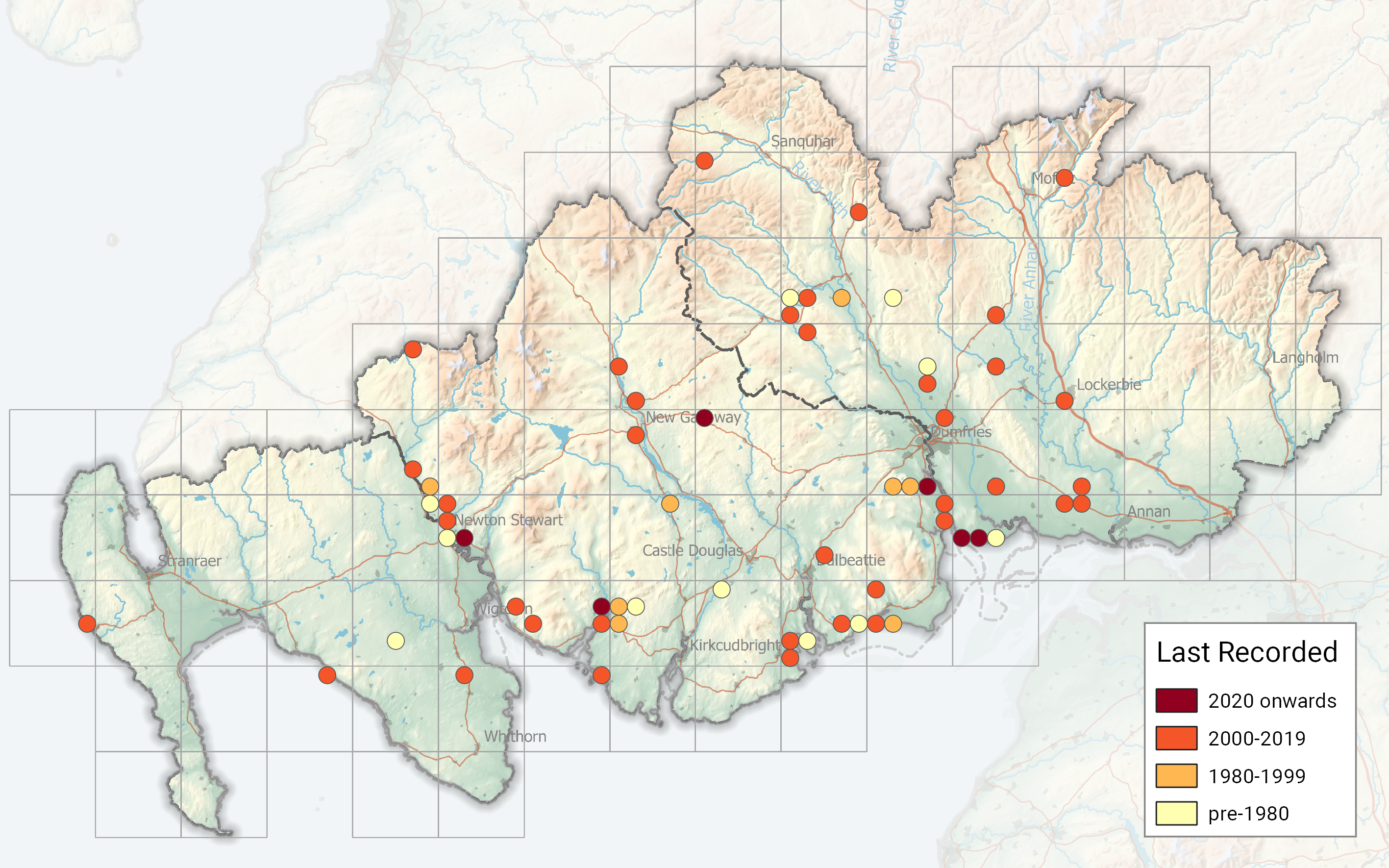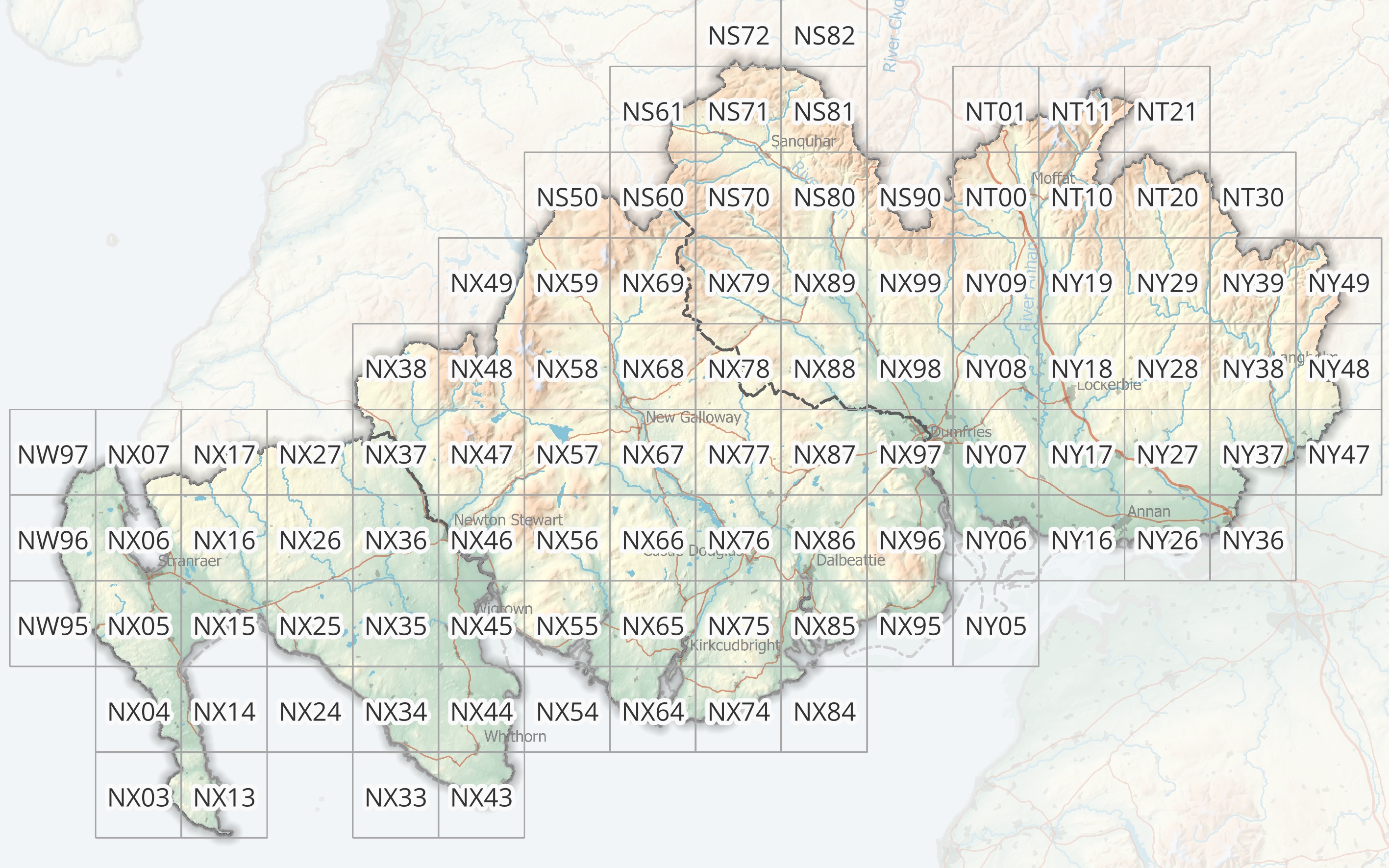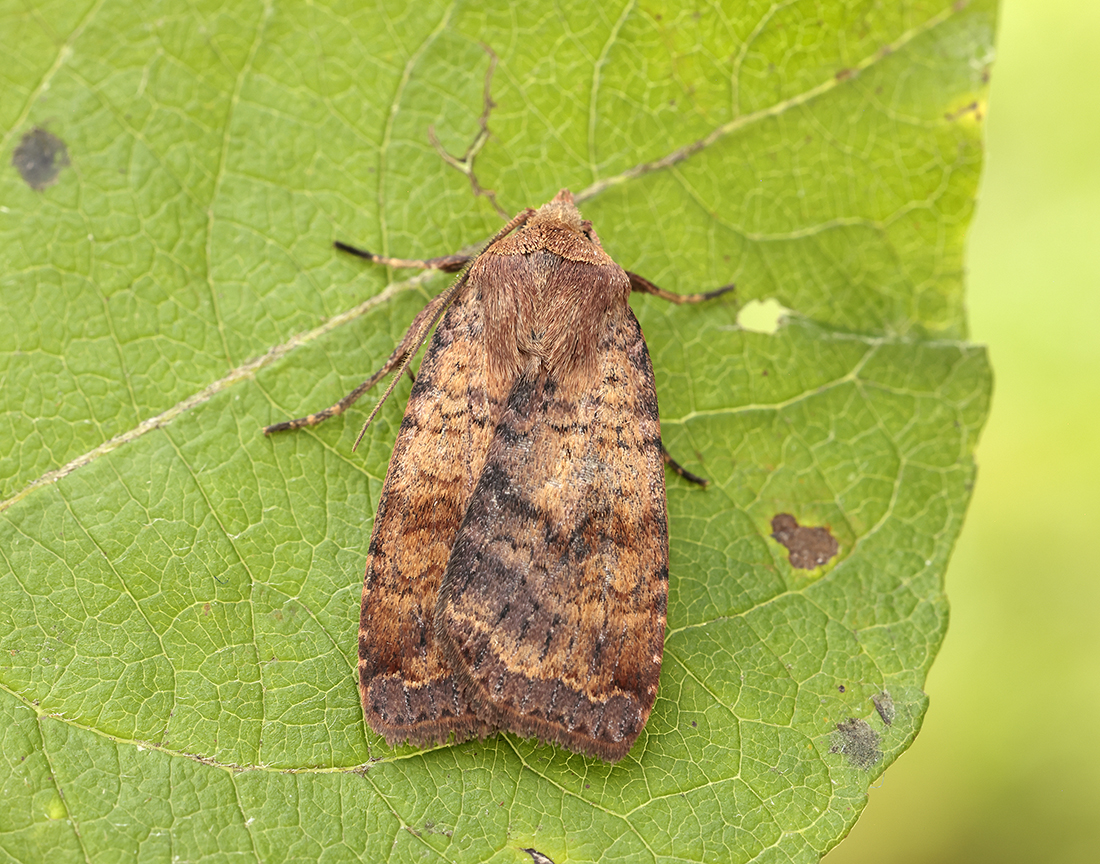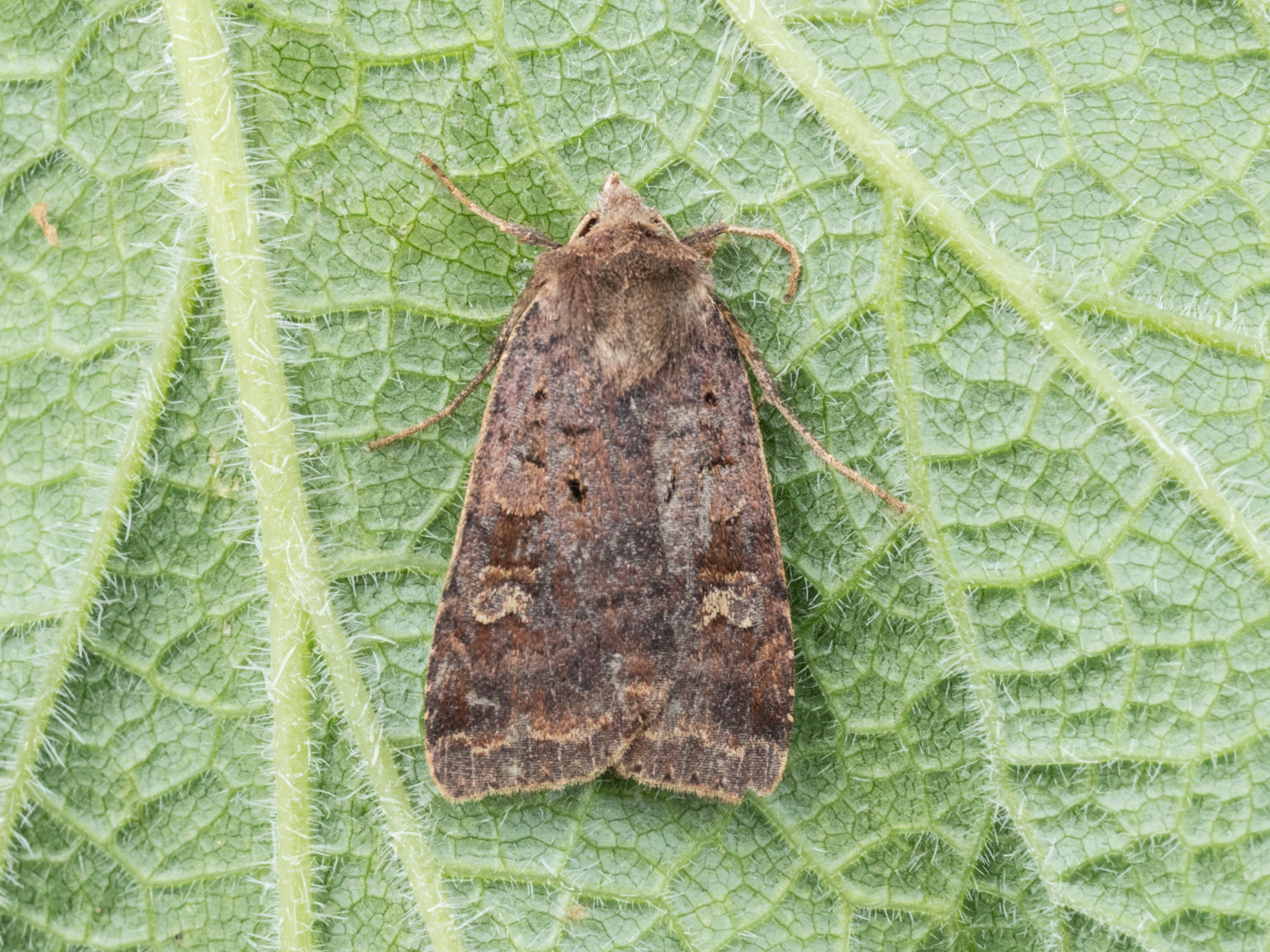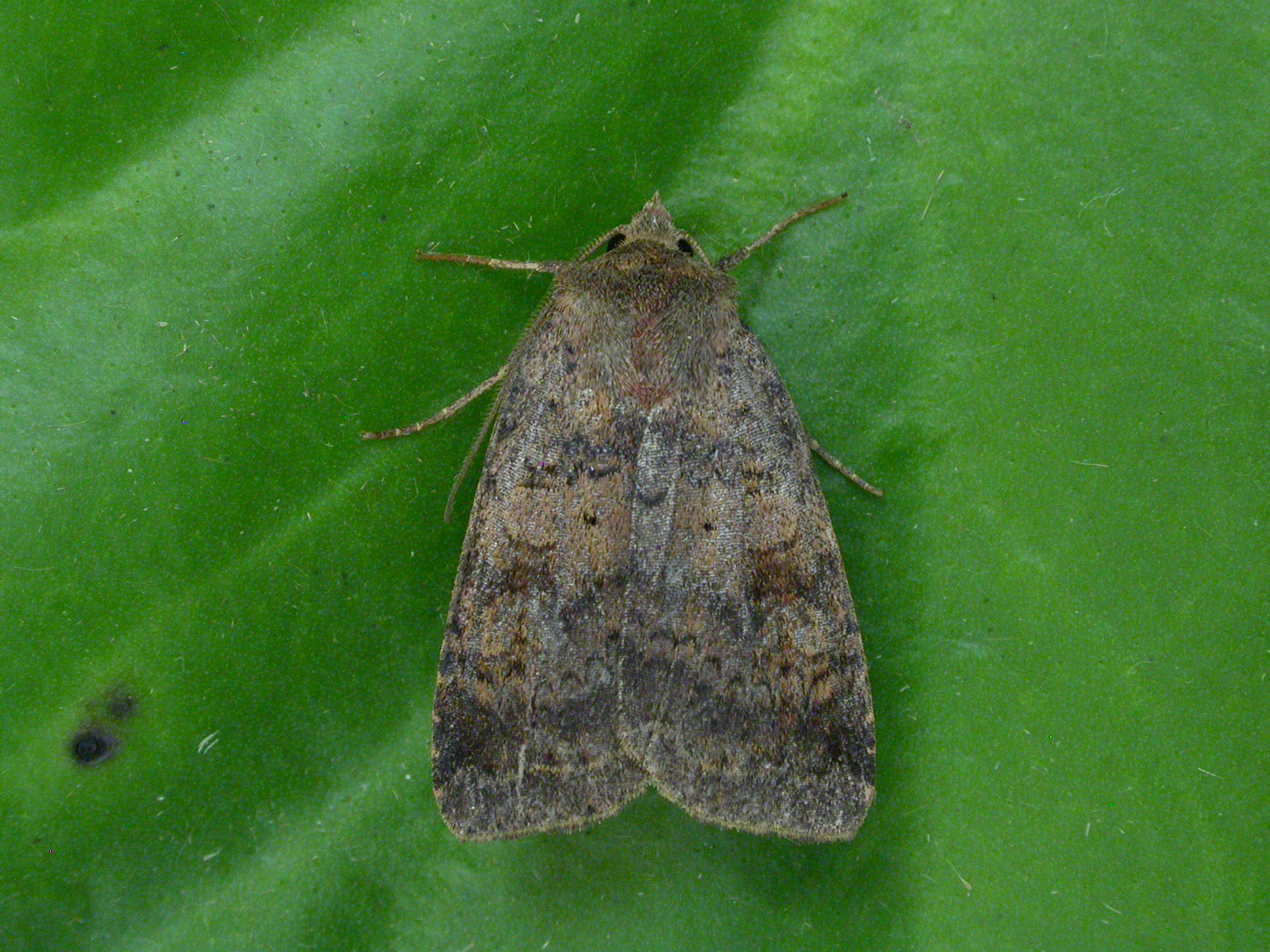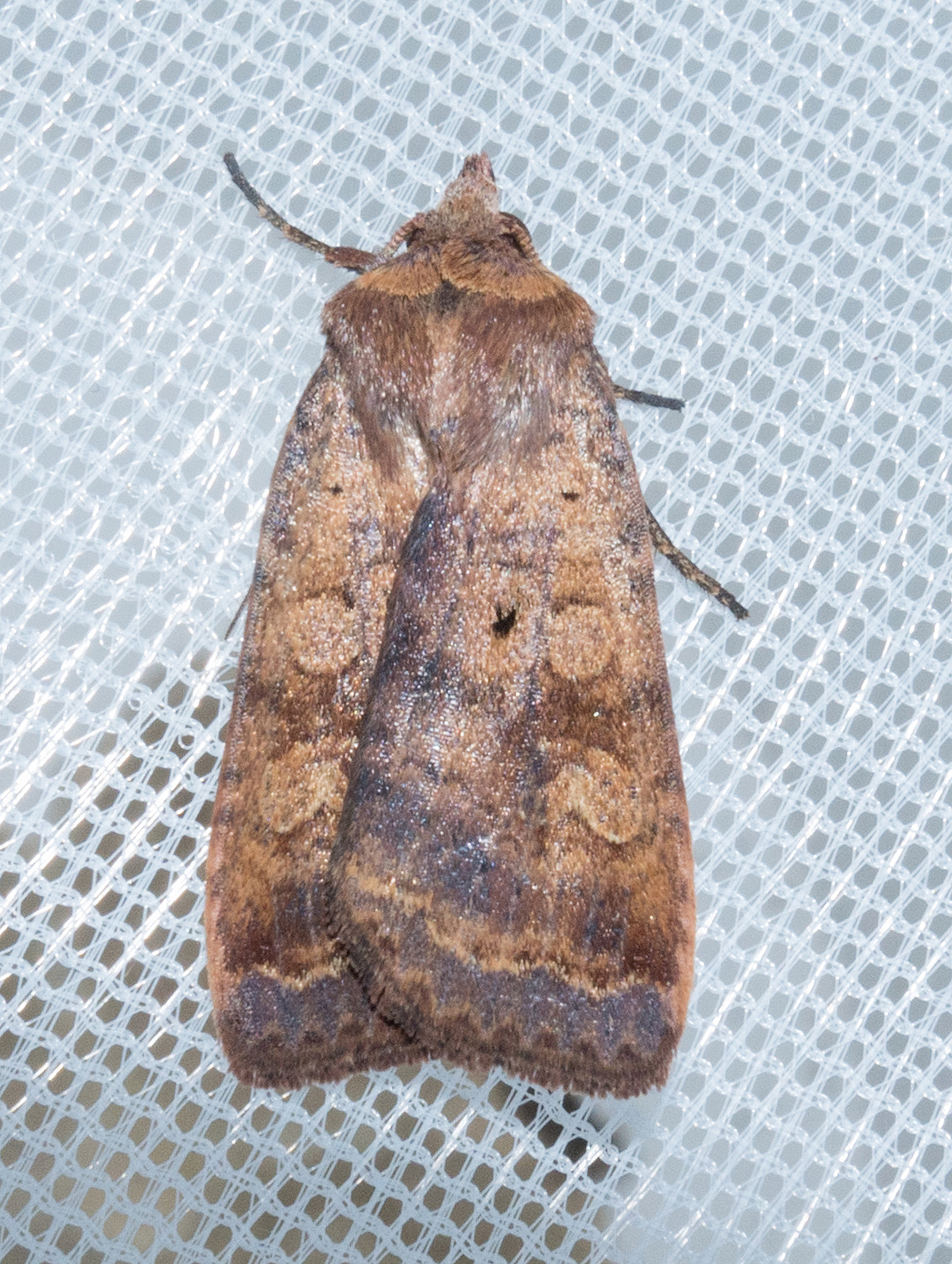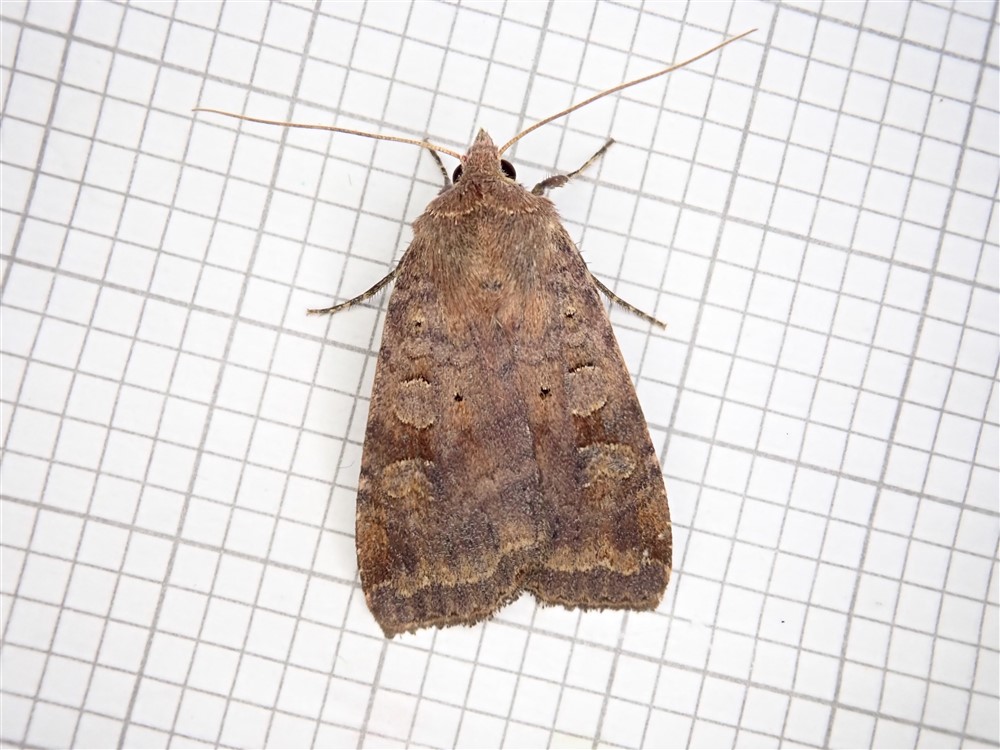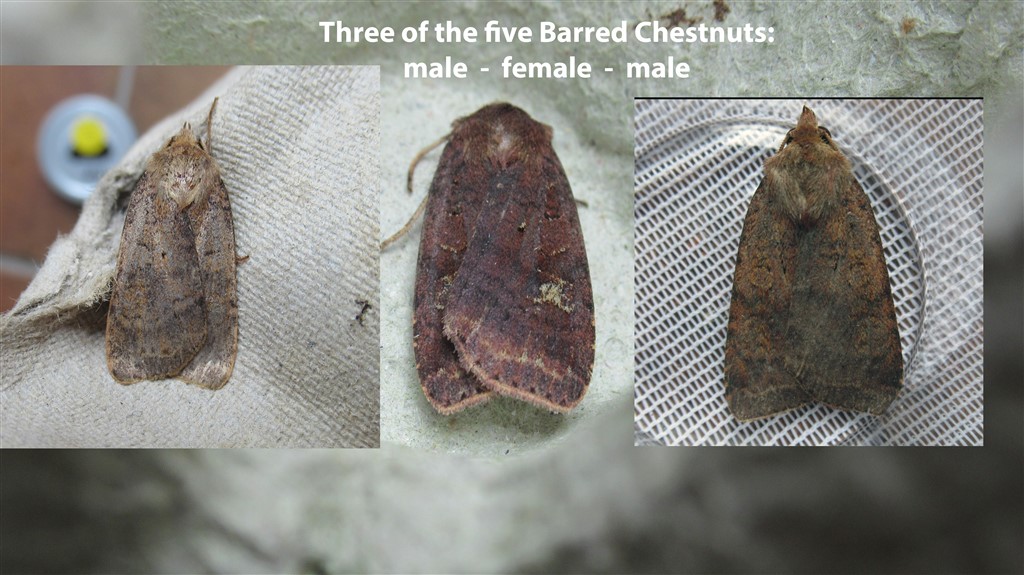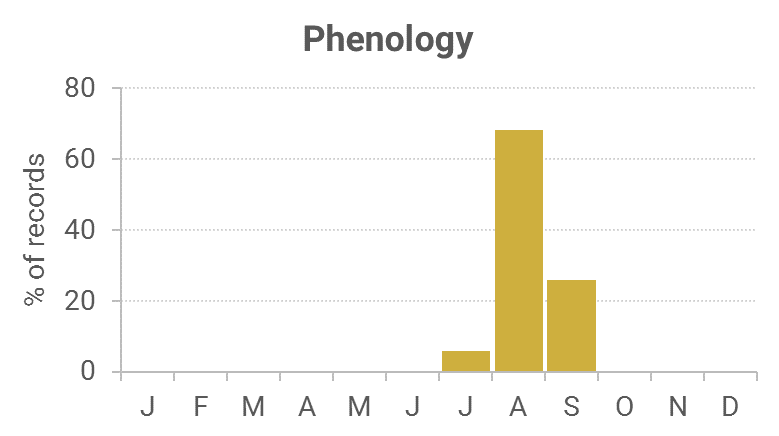Identification
The strongly curved leading edge on a rather broad forewing will identify it from similar species.
Recording Method.
Attracted to light, also comes to sugar and flowers.
Life cycle
One generation. Overwinters as a larva during September to early spring, feeding at night. Pupation takes place underground in a loose cocoon.
Larval foodplants
Larvae feed on Blaeberry, Bramble, willows and birches.
Habitat
Broadleaved woodland and wooded moorland.
History
Douglas Robinson (1870-71) had found it common at sugar in July on Almorness (VC73). Gordon (1913) thought it was scarce in Wigtownshire, but he had noted it at sugar in the woods at Corsemalzie, Wigtownshire. Earliest date was 9th July 1905.
Sir Arthur Duncan (1909-84) during his lifetime had found it at Closeburn and Tynron (VC72). Archibald Russell (1944) listed it as occurring near Gatehouse of Fleet (VC73) during the years 1942-43.
During 1975-93 the four westerly Galloway Rothamsted stations provided all the records, while in Dumfriesshire, Waterside Mains reported it only twice and Caerlaverock not at all. Since then it has been trapped almost annually.

